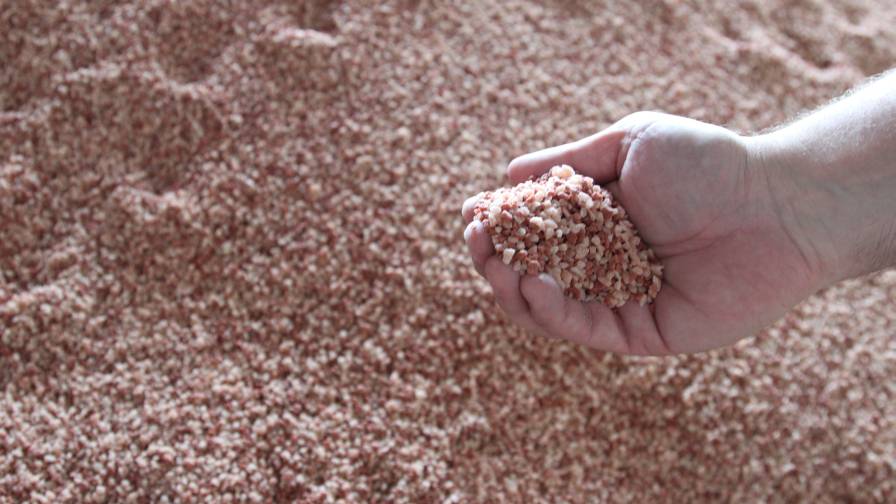Phosphate and Potash Outlook 2020
As we turn the page to a new decade, it’s useful to take a look back at how phosphate and potash markets fared in 2019, as well as what we’re watching for in 2020.
After marching higher in 2018, wholesale phosphate and potash prices came under pressure last year as increasing supplies outpaced tepid demand. Exacerbating the price impact was a common feature of many commodity markets: Buyers pulled back from the market and instead drew down inventories as they awaited a “bottoming out” of the market price.
Such demand deferral sustains the downward momentum of pricing until such time that buyers must return to the market to replenish their supplies and/or they sense a unique opportunity to secure volume at a bargain price.
That time appears to have arrived. This tees up a couple of key questions: What were the key drivers that put prices under pressure? And could they persist or reassert themselves in 2020?
Why Were Prices Under Pressure?
One of the main culprits was U.S. weather. Last year saw unprecedented precipitation totals and record flooding across a broad swath of the country, while lock closures on parts of the U.S. river system set records for consecutive days of closure. The wet weather also led to record-setting planting delays and vaulted acres certified with the USDA’s Farm Service Agency as “prevented planting” to a new high of nearly 20 million (more than double the peak of nearly 10 million in 2011).
The spring of 2019 followed a truncated season for fall fieldwork in 2018, when weather was also a factor. Back-to-back application seasons (fall ’18 and spring ’19) led to missed fertilizer applications and an inordinate number of barges, particularly phosphate, stuck on the Mississippi River, unable to reach their intended destinations to off-load. Outside of the U.S., demand for phosphate and potash nutrients also faltered in a couple of major markets, resulting in global shipments of the leading P&K products retreating from the record demand achieved in 2018. While demand was faltering, incremental new supplies continued to be brought to market from several new and existing production facilities around the world.
While it was anticipated that the fall 2019 harvest in North America would likely be behind schedule due simply to the later planting, the continuation of a wet weather pattern (and extremely wet in parts of the Northern Plains) once again led to a below-average fertilizer application season in fall 2019. This meant that the relatively high inventory levels throughout distribution and retail channels were unable to be cleared, which exacerbated the price weakness seen earlier in the year. Wholesale phosphate prices reached their lowest level in 13 years, while potash slipped back toward the low levels seen in 2016. To reiterate, this dynamic was largely a function of the weather rather than any structural change in market dynamics.
From a retail pricing standpoint, phosphate and potash prices were broadly flat in 2019. The reason for the discrepancy in price movements (wholesale vs. retail) is explained by the fact that retail prices tend to lag wholesale prices, and there are significant additional costs — logistics, handling, warehousing, insurance, and other carrying costs, as well as value-added services — that moved higher in 2019 and acted as an offset to the wholesale price declines.
What are the 2020 market drivers? We believe that there is significant pent-up demand for fertilizers globally and the U.S. market in particular. Our crop nutrient affordability metric, the ratio of a wholesale fertilizer price index and a crop price index, suggests fertilizer prices are very affordable at present and thereby should provide a very attractive value proposition.
Once the spring 2020 application season winds up — a season which we expect to see U.S. farmers plant 93 to 95 million acres of corn (up approximately 4 million year over year [YoY]), 85 to 87 million acres of soybeans (up approximately 10 million YoY) and 45 to 46 million acres of wheat (flat to 1 million acres higher YoY) — we expect demand to rebound for P&K as growers look to catch up on missed applications in seasons prior. Farm economics remain OK as government payments (e.g., the market facilitation program) helped to offset what was for many growers an incredibly challenging 2019. Moreover, we believe that corn and soybean prices likely have upside upon the signing of a phase one trade agreement between the U.S. and China or upon potential downward revisions to U.S. production estimates from the USDA’s resurveying of growers that was announced with their Jan. 10 report. It’s also worth mentioning China’s ethanol program after markets reacted negatively to the news in early January that China was suspending the rollout of their nationwide E10 blending mandate. There are a couple of important details to consider that didn’t receive as much attention as the negative headline: 1) There was no mention of pulling back on current ethanol demand, so this decision is not actually negative for demand but rather more of a maintaining of the status quo; 2) The decision to suspend the rollout is quite likely a function of Chinese corn inventories being lower than what many analysts have been assuming. This sets the stage for a potentially big step up in Chinese corn imports.
Where Are P&K Prices Headed?
In the case of phosphates, barring another record-breaking wet spring, we see no way that prices can be sustained at the level seen at the end of 2019, and if the past is any guide, they will snap back sharply.
Through the first couple of weeks of 2020, phosphate prices have already risen about $30 per ton. We anticipate that a tightening global supply/demand balance will see wholesale prices recovering throughout the year. With regard to potash, there is no clear catalyst for a breakout to the upside or downside, and we expect that there will be little more than seasonal price swings for that nutrient.
From a retail pricing standpoint in 2020, it is possible that there could be modest relief, particularly if wholesale prices under-perform our expectations (for example, if demand does not materialize as anticipated), but we’re not expecting a step-change in pricing, either up or down.
Potash

Potash demand forecast shows shipments rising nearly 5% this year.
Wholesale granular MOP prices started 2019 by trading at about $290 per ton fob New Orleans (NOLA) barge and moved steadily lower before closing the year a bit north of $225 per ton. This circa $65 per ton decrease was in line with blend grade potash price declines elsewhere in the world, so once again the U.S. market retained its distinction as one of the lowest-priced markets in the world.
Outside of U.S. weather-driven demand issues, demand was also notably weak in Southeast Asia, where a collapse in palm oil prices drove a roughly 30% cut in potash demand in Indonesia/Malaysia. This offset rising demand in a few of the other large markets around the world (e.g., Brazil and China). Given the sub-par demand environment, even the modest incremental new supplies seen in 2019 were sufficient to push global supply/demand fundamentals into a state of surplus, thereby driving the falloff in global benchmark prices. Global shipments of MOP in 2018 were around 67 million metric tonnes, whereas 2019 saw shipments drop back to less than 65 million or a 3% year-over-year decrease, with North America accounting for perhaps half of the net 2 million tonne decline.
Typically, global demand increases by more than 2% per annum. So even though the ramp-ups of greenfield projects in Canada and Russia fell well short of market expectations on the supply side, the market still moved into surplus. It is likely that there will once again be slow but meaningful production volume improvements from potash mine ramp-ups in 2020, but it is also likely that demand will snap back to a level closer to historical trend growth, with farmers worldwide looking to replace depleted soils, led by a rebound in the U.S. and Southeast Asia, the latter benefitting from a 78% increase in palm oil prices between their November 2018 low and early January 2020.
Our baseline potash demand forecast shows shipments rising nearly 5% this year despite markets like the U.S. starting the year with elevated channel inventories that were a function of the back-to-back-to-back below-average application seasons. In other worlds, global demand could make up the decline seen last year, as well as grow at that historical average of two-plus percent. This is the fundamental argument for prices to remain range-bound in a narrow band, as incremental gains in supply, plus inventories carried over from 2019, should be absorbed by a market exhibiting such a sharp turnaround in demand. Also helping to bring the supply side into balance with demand are production curtailments beginning in the second half of 2019 from the two large North American producers as well as the other four largest offshore suppliers in order to manage inventories that had been rising earlier in 2019.
Phosphate

Demand prospects for phosphate look solid this year on the back of still-OK global agricultural economics and the agronomic need to replace nutrients.
The wholesale DAP price fob NOLA barge price began to slip lower in late 2018 and continued that trend throughout 2019. Prices fell by approximately $150 per ton in 2019 — from $385 down to around $235. As with potash, U.S. wholesale prices were pressured by consecutive weather-interrupted application seasons — fall ’18, spring ’19, and fall ’19 — but the price decline was exacerbated by excess import supplies pushed into a U.S. river system that was contending with record-setting high water throughout the first half of the year (and beyond).
As an example of the challenges on the U.S. inland waterways, Mosaic was unable to offload a phosphate barge at its Pine Bend, MN, facility until August, when this would typically have taken place by early April. With subpar demand and unneeded supplies being pushed into the market, stocks throughout the fertilizer distribution channel swelled. Whereas only about 15% of North American potash demand is typically met via offshore imports, primarily through NOLA, about one-third of phosphate fertilizer demand is met in this fashion. Wholesale phosphate prices are thusly subject to greater volatility.
Outside of North America, global markets were contending with increased supplies from China in the first half of 2019, due to a lackluster spring season there and a recent trend to bring their phosphate use into alignment with agronomic norms. Additionally, there were incremental supplies brought to market from the ramp-up of new projects in Morocco and Saudi Arabia.
After growing at a modest compound annual rate of about 1.5% from 2014 to 2018, we estimate that global shipments of the leading solid phosphate products (DAP/MAP/NPS/TSP) fell back about 3% to 68.5 million tonnes in 2019. These headline figures, however, don’t tell the whole story, as a decline in Chinese demand over the past five years has acted as a large drag on global phosphate fertilizer shipments. In addition, the lack of domestic market opportunities has allowed Chinese producers to keep their export volumes relatively stable at 10 to 12 million tonnes per year despite several plant closures due to environmental or other reasons. Excluding China, the average rate of demand growth has been nearly 4% per annum, inclusive of the decline seen in 2019. Offsetting the demand contraction in China were extraordinary demand gains in a whole host of markets around the world, most notably in other parts of Asia and in Latin America.
Demand prospects look solid this year on the back of still-OK global agricultural economics and the agronomic need to replace nutrients. We forecast that global shipments of high-analysis phosphate products will climb about 2% YoY to 70 million tonnes (the growth rate is near 3% excluding China). Global inventories are not burdensome, though there are pockets — e.g., in the U.S. — which will need to be worked through. Shipment gains are expected to be spread broadly around the world and, as with potash, led by a rebound in the U.S. and Southeast Asia. Even with this relatively modest phosphate demand forecast in 2020, there is little incremental new supply coming to market, and it would appear that the shift to lower exports from China seen in the second half of 2019 will continue into 2020 on the basis of recent producer announcements. The bottom line is that signs point toward a meaningful tightening of the supply/demand balance as we move through 2020, which should translate to a recovery of wholesale prices.






